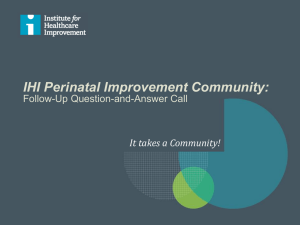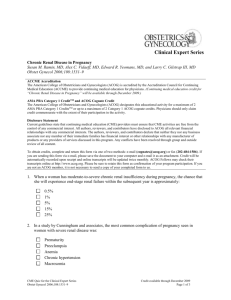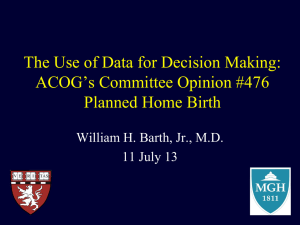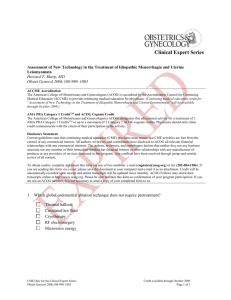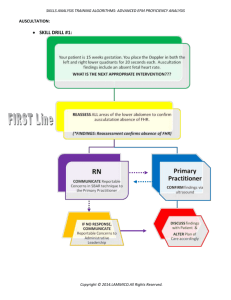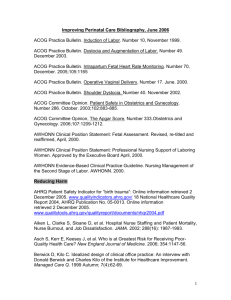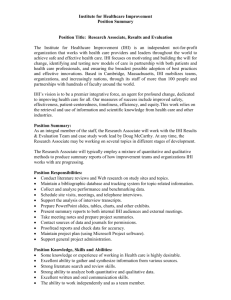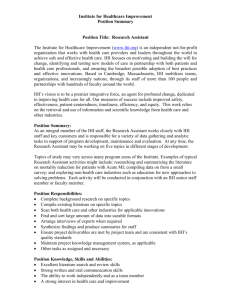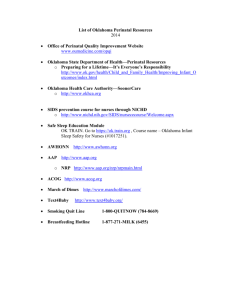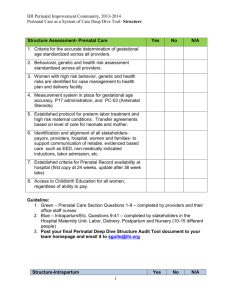Perinatal-EFM Toolbox Reference List
advertisement
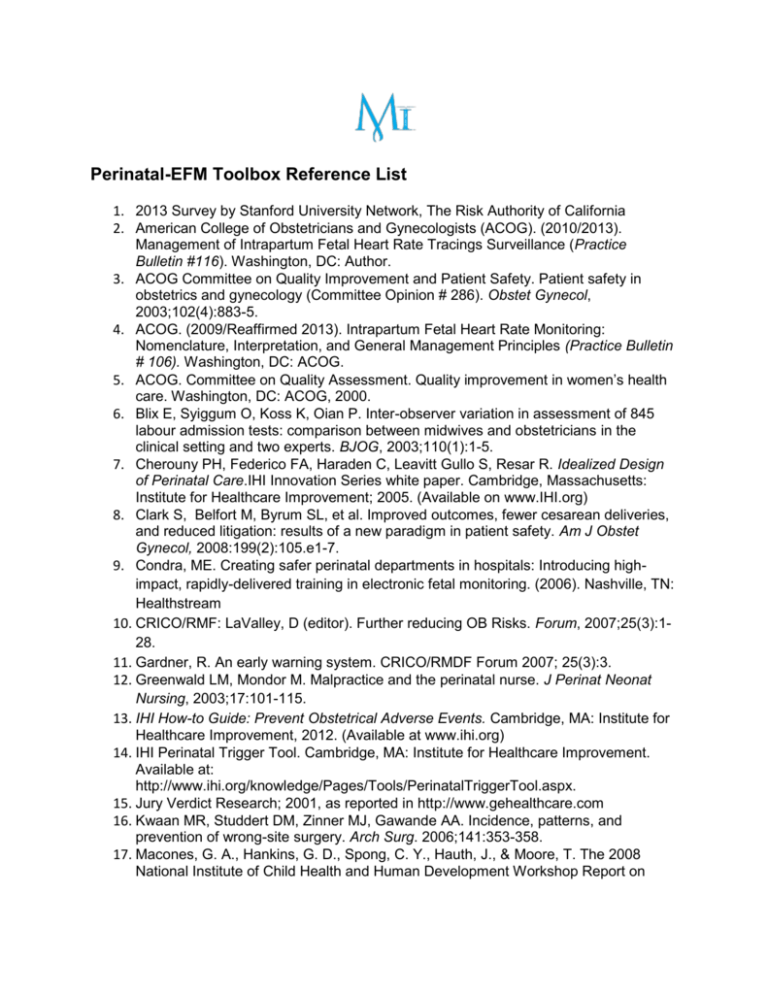
Perinatal-EFM Toolbox Reference List 1. 2013 Survey by Stanford University Network, The Risk Authority of California 2. American College of Obstetricians and Gynecologists (ACOG). (2010/2013). Management of Intrapartum Fetal Heart Rate Tracings Surveillance (Practice Bulletin #116). Washington, DC: Author. 3. ACOG Committee on Quality Improvement and Patient Safety. Patient safety in obstetrics and gynecology (Committee Opinion # 286). Obstet Gynecol, 2003;102(4):883-5. 4. ACOG. (2009/Reaffirmed 2013). Intrapartum Fetal Heart Rate Monitoring: Nomenclature, Interpretation, and General Management Principles (Practice Bulletin # 106). Washington, DC: ACOG. 5. ACOG. Committee on Quality Assessment. Quality improvement in women’s health care. Washington, DC: ACOG, 2000. 6. Blix E, Syiggum O, Koss K, Oian P. Inter-observer variation in assessment of 845 labour admission tests: comparison between midwives and obstetricians in the clinical setting and two experts. BJOG, 2003;110(1):1-5. 7. Cherouny PH, Federico FA, Haraden C, Leavitt Gullo S, Resar R. Idealized Design of Perinatal Care.IHI Innovation Series white paper. Cambridge, Massachusetts: Institute for Healthcare Improvement; 2005. (Available on www.IHI.org) 8. Clark S, Belfort M, Byrum SL, et al. Improved outcomes, fewer cesarean deliveries, and reduced litigation: results of a new paradigm in patient safety. Am J Obstet Gynecol, 2008:199(2):105.e1-7. 9. Condra, ME. Creating safer perinatal departments in hospitals: Introducing highimpact, rapidly-delivered training in electronic fetal monitoring. (2006). Nashville, TN: Healthstream 10. CRICO/RMF: LaValley, D (editor). Further reducing OB Risks. Forum, 2007;25(3):128. 11. Gardner, R. An early warning system. CRICO/RMDF Forum 2007; 25(3):3. 12. Greenwald LM, Mondor M. Malpractice and the perinatal nurse. J Perinat Neonat Nursing, 2003;17:101-115. 13. IHI How-to Guide: Prevent Obstetrical Adverse Events. Cambridge, MA: Institute for Healthcare Improvement, 2012. (Available at www.ihi.org) 14. IHI Perinatal Trigger Tool. Cambridge, MA: Institute for Healthcare Improvement. Available at: http://www.ihi.org/knowledge/Pages/Tools/PerinatalTriggerTool.aspx. 15. Jury Verdict Research; 2001, as reported in http://www.gehealthcare.com 16. Kwaan MR, Studdert DM, Zinner MJ, Gawande AA. Incidence, patterns, and prevention of wrong-site surgery. Arch Surg. 2006;141:353-358. 17. Macones, G. A., Hankins, G. D., Spong, C. Y., Hauth, J., & Moore, T. The 2008 National Institute of Child Health and Human Development Workshop Report on Electronic Fetal Monitoring: Update on definitions, interpretation, and research guidelines. Obstet & Gynecol, 2008; 112(3):pp. 661-666. 18. Medical Malpractice: Verdicts, Settlements and Statistical Analysis Updated Edition. Horsham, PA: Jury Verdict Research; 2005:12. 19. NICHD Research Planning Workgroup. Electronic fetal heart rate monitoring: Research guidelines for interpretation. AJOG, 1997;177(6):1385–1390 20. Simpson, KR. Obstetrical “never events”. MCN Am J Matern Child Nurs, 2006;31(2):136. 21. The Joint Commission (TJC). Sentinel Event Data: Event type by year 1995-2013. April 15, 2014. Accessed on website: http://www.jointcommission.org/se_data_event_type_by_year_/ 22. TJC. Patient controlled anesthesia by proxy (Sentinel Event Alert #33). December 20, 2004;(33):1-2. 23. White AA, Prichert JE, Bledsoe SH, Irwin C, Entman SS. Cause and effect analysis of closed claims in obstetrics and gynecology. Obstet Gynecol, 2005;105:1031-1038.
